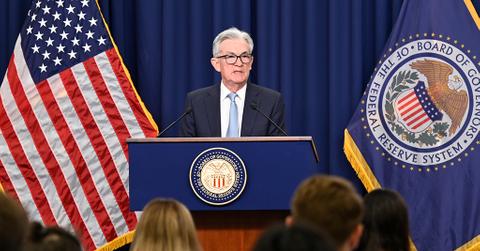How the Fed’s Interest Rate Increase Should Help the Economy
The Fed raised interest rates by 75 basis points at its June 2022 meeting. Why does the Fed raise interest rates?
Jun. 17 2022, Published 8:00 a.m. ET

Markets had an inkling of what the Fed was going to after inflation readings for May came in at 8.6 percent, topping economists’ estimate of 8.3 percent. The Fed followed through by raising rates by 0.75 basis points, the highest one-time increase since 1994. Why exactly does the Fed raise interest rates?
The Fed has a dual mandate, of maximizing employment and maintaining stable prices. If one goes out of whack, the Fed can do several things to restore balance, including monetary easing and tightening, open market and reserve requirement adjustments, and federal funds rate changes. The latter has far-reaching consequences.
How tweaking the federal funds rate can help the economy
The federal funds rate is the short-term interest rate at which U.S. financial institutions lend money to each other.

As University of New Haven finance and economic instructor Leah Hartman explains, “The Federal Reserve sets an overnight lending rate (loan rate) to large banks, which in turn lend out funds to smaller banks and also businesses and individuals. If the Fed increases the rate, it is more expensive to borrow. If more expensive to borrow, fewer loans will be sought—the project or purchase becomes more expensive and perhaps too expensive to warrant purchase or pursuit.”
Higher rates slow down business and consumer spending
Raising interest rates slows both investment and consumption by businesses and consumers, reducing overall spending in the economy. Higher rates slow down business activity as well, encouraging people to save more and curtailing money circulating in the system. As a result, inflation is tempered.
Mortgage rates are at their highest since 2008
Among the most relevant examples of what the Fed’s interest rate hike can affect are mortgage rates. Whereas the Fed doesn't directly set mortgage rates, the federal funds rate ultimately determines them. After the Fed’s most recent tightening cycle, mortgage rates have reached 6.28 percent, the highest they’ve been since 2008. As a result, many new buyers are backing off from buying homes.
The Fed has a fine balancing act to maintain
There's s always a chance that while trying to control inflation, the Fed could send the economy into a recession. This is one of the biggest fears of the market right now. Brokerages have warned of a recession and investors are preparing for a downturn in the U.S. economy.
